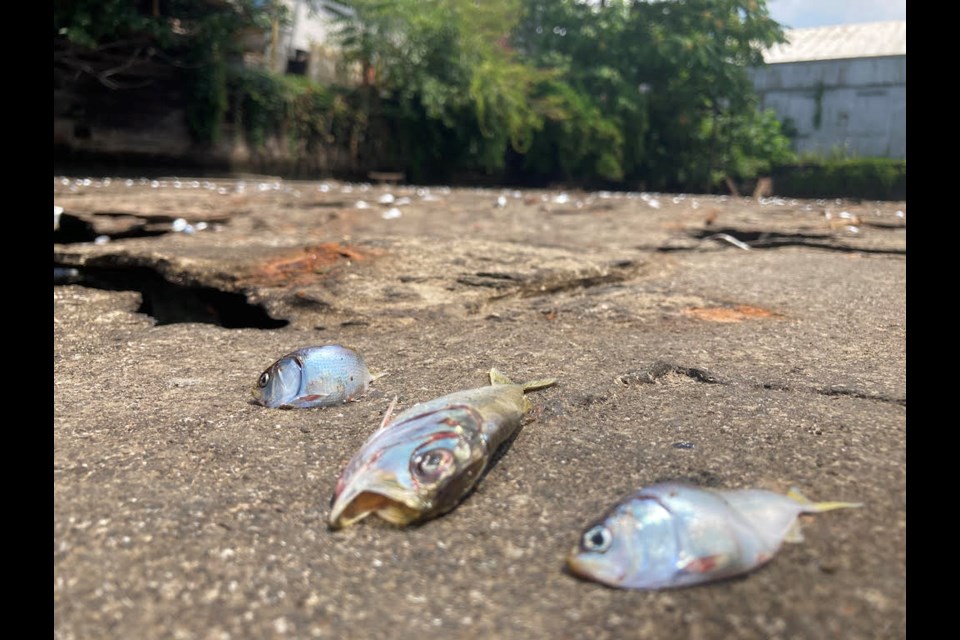Brooklyn residents walking by the Gowanus Canal on July 15, 2023, were met with a gruesome sight: the corpses of thousands of fish floating along the surface of the canal’s infamously murky waters, with even more strewn about its exposed banks.
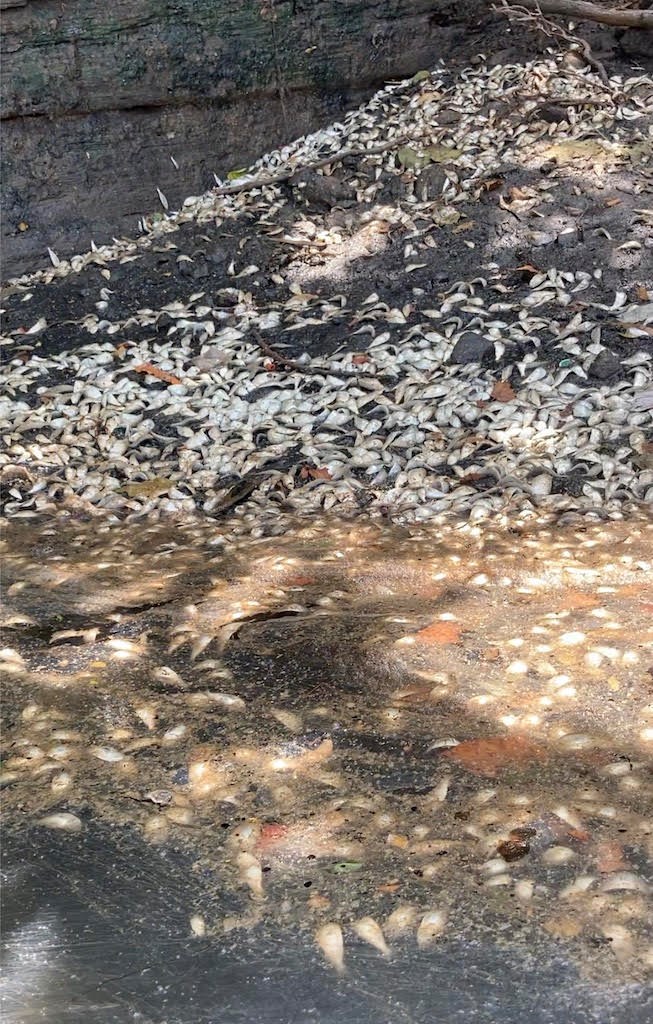
To make matters worse, as the fish decomposed, the foul smell of rotting marine life began to envelop the neighborhood, where it lingered for days.
“It was just intensely putrid,” said Gowanus resident Joan Rodriguez, as she walked along the canal on August 1. “It hasn’t smelled this bad since I was a kid.”
The cause of the die-off came to light very quickly, as the Gowanus Dredgers Canoe Club, – an organization dedicated to conserving and advocating for the canal – happened to be conducting water quality tests as part of the City of Water event that same day.
What they found was dissolved oxygen (DO) levels near zero parts per million (ppm). Fish begin to die off when DO levels dip to three ppm, according to Dredgers board member Eymund Deigel.
“They got taken by surprise suddenly,” Deigel said of the deceased fish, primarily consisting of young Atlantic Menhaden – often called Peanut Bunker – but also including other species of fish and crabs. “Within an hour, their oxygen dropped down to zero, and they basically asphyxiated.”
Survivors huddled near the canal’s banks near direct stormwater discharges and by outlets of historic creeks, which provide fresh, oxygenated water into the canal.
How did this happen?
Tests revealed two major factors behind this dramatic drop-off in DO, which usually hovers between five and eight ppm, according to Deigel: High levels of sediment in the water, which increases water temperature, and levels of enterococcus bacteria (gut bacteria found in human and animal waste) that shocked the testers.
“We're talking like maxing out the live charts in terms of how much bacteria was in that sewage,” Deigel said.
“They were the highest levels of enterococcus bacteria that I have ever handed a sample of over to the lab,” said Jennifer Kepler, education program manager at the Gowanus Canal Conservancy,
GCC’s monitoring devices recorded even higher levels of enterococcus in the two weeks that followed the die-off, surpassing the measurable limit. DO readings taken by the Conservancy and the Dredgers in the weeks of July 17 and 24 continued to hover between zero and one ppm.
The high volumes of bacteria were the result of a major thunderstorm overnight on July 14, which created rainwater overflow that overwhelmed New York’s combined sewer system, which collects sewage, industrial waste, and stormwater runoff in the same pipe.
In these instances, known as Combined Sewer Overflows, or CSOs, this mix of rainwater and sewage is discharged into local water bodies. CSO events are nothing new to the canal – each year, it receives 363 million gallons of CSO discharge, caused by as little as a quarter inch of rain, according to Kepler.
However, the combined factors of recent hot weather, heavy rain, and the canal’s lowland position in a densely populated area, created conditions unsuitable for aquatic survival.
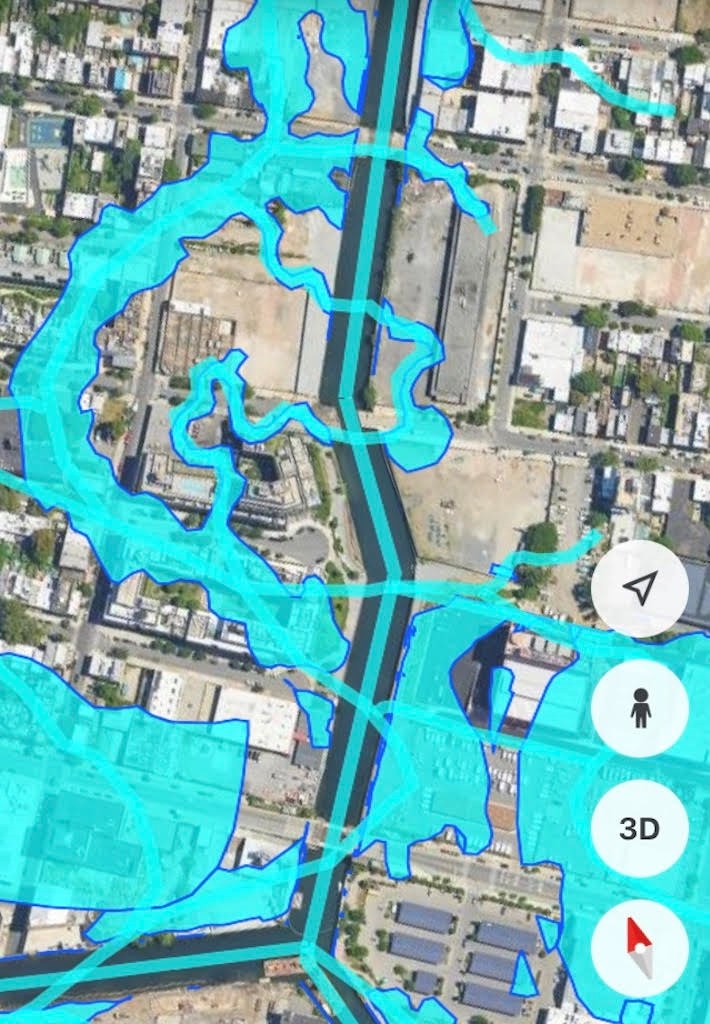
Another factor for this die-off was the capping of the flushing tunnel at the canal’s head, said Gary Francis, captain of the Dredgers. The tunnel pumps in fresher, oxygenated water from the East River’s Buttermilk Channel – as part of the U.S. Department of Environmental Protection’s $500 million clean-up project.
Barges are removing up to ten feet of contaminated sediments from over a century of industrial pollution, and then “capping” the native sediment underneath. Water from the tunnel could disturb this process. And while it may also result in higher levels of sediment in the water column, and therefore reduced oxygen levels, Francis said that the EPA’s work is essential to improving the canal’s water.
What is city government doing to address the problem?
In recent years, the city has built high level storm sewers and upgraded a wastewater pump station in order to reduce CSO frequency and block litter from the canal.
In 2021, the EPA ordered the city to construct two CSO retention tanks, one at the head of the Gowanus Canal and one downstream. The goal is to block up to 12 million gallons of CSO from entering the canal during storms. The tanks, which are set to be completed in 2030, are part of the city’s $1.6 billion investment into the canal, which also includes creating 3.6 acres of public parkland along its shores.
The tanks could cut CSO outflows by a quarter or even half, Deigel said. However, he, like Francis and Rodriguez, is uncertain if two tanks will be sufficient.
“A more effective solution would be making lots of small tanks upslope where it'll make a huge difference,” he said, adding that by the time CSO discharge reaches the tanks by the canal it will “already be too late.”
Deigel has a clear solution to this issue in mind.
“We need to get stormwater out of the sewer system,” he said.
This can be achieved by mandating rainwater catchment infrastructure – like gravel troughs or rain gardens – along all public parking lots, playgrounds, and other asphalt surfaces in the city, as well as on water-adjacent street ends, he said. Rainwater-absorbing “tree pits” should be built under all street-side trees in the city, he added.
“We need to get public property bound by the same laws that are required for private developers,” he said.
Increasing tree cover and green spaces is also essential in helping protect the city’s waterways against rising temperatures related to global warming, he said.
Kepler and Francis are working with local students on another possible solution: Creating a suitable habitat in the canal for a thriving population of Atlantic ribbed mussels, who could play a large role in filtering bacteria out of its waters.
Some local advocates have raised re-opening the tunnel during non-dredging hours to help with water and oxygen flow, according to Deigel.
“There's not really a single solution,” Francis said. “It has to be holistic and multipronged.”
The impact of real estate development on the canal's health
Francis said he is a “little wary” of the CSO contribution that could be created by current real estate development along the canal, spurred by the 82-block rezoning initiative passed by city council in 2021. The rezoning promises to create 8,500 housing units in the historically industrial neighborhood, with 3,000 marked as “permanently affordable.”
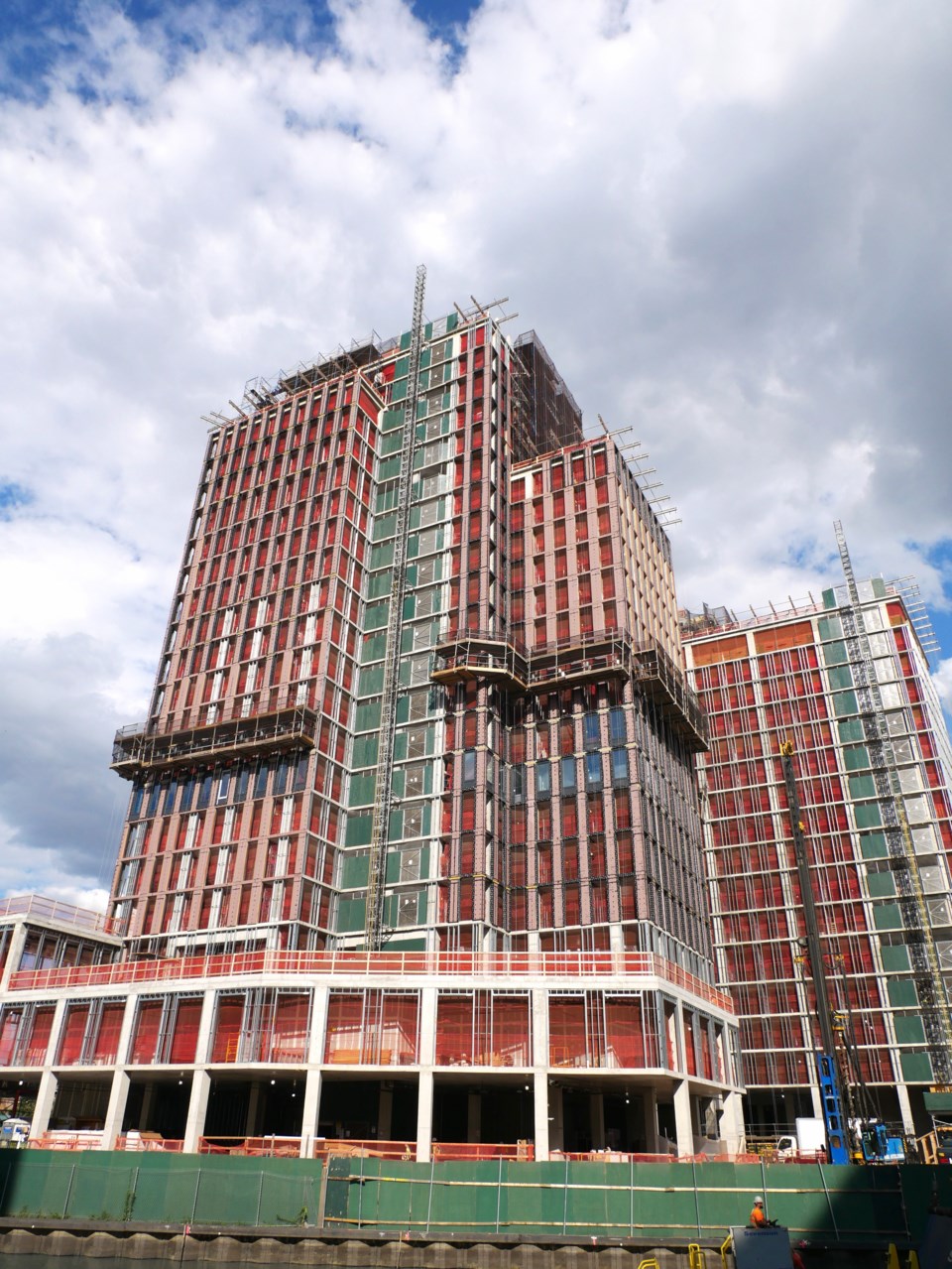
Francis said he is pleased to see expansion of affordable housing amidst the current housing crisis, as long as it's done with sustainability in mind.
“The key thing to focus on is not sewage, toilets and new development, but old development that's rapidly discharging a lot of stormwater very fast and creating those peak overflows,” Deigel said, pointing to housing projects on the canal that have built stormwater holding tanks along their courtyards.
Rodriguez said she welcomes housing development in Gowanus. However, she is concerned about the health and safety of the new residents the neighborhood will soon welcome, given the high levels of toxic waste in the canal. She worries that concrete dust from construction sites might be adding to the pollution as well.
Deigel, however, is excited about the new stakeholders of the canal the development will create.
“We're going to have more people with a vested interest in a better environment,” he said.
“People are going to want healthier water to be enjoying on their walk and to be surrounded by, so I feel optimistic,” said Kepler.
Moving forward
Deigel and Francis share Kepler’s optimism, and a vision for a walkable, accessible – and maybe even fishable — canal, with active community engagement. Deigel wants to see the return of natural wetlands, slopes, and “soft edges” to the canal, which will attract more of the cormorants, kingfishers, and other birds sometimes found along its banks.
Deigel is hopeful because of the massive improvements in sewage management he has witnessed in the last few decades.
“The fact that we're actually getting fish at all to die is a big deal, because before the fish didn't even bother coming,” he said.
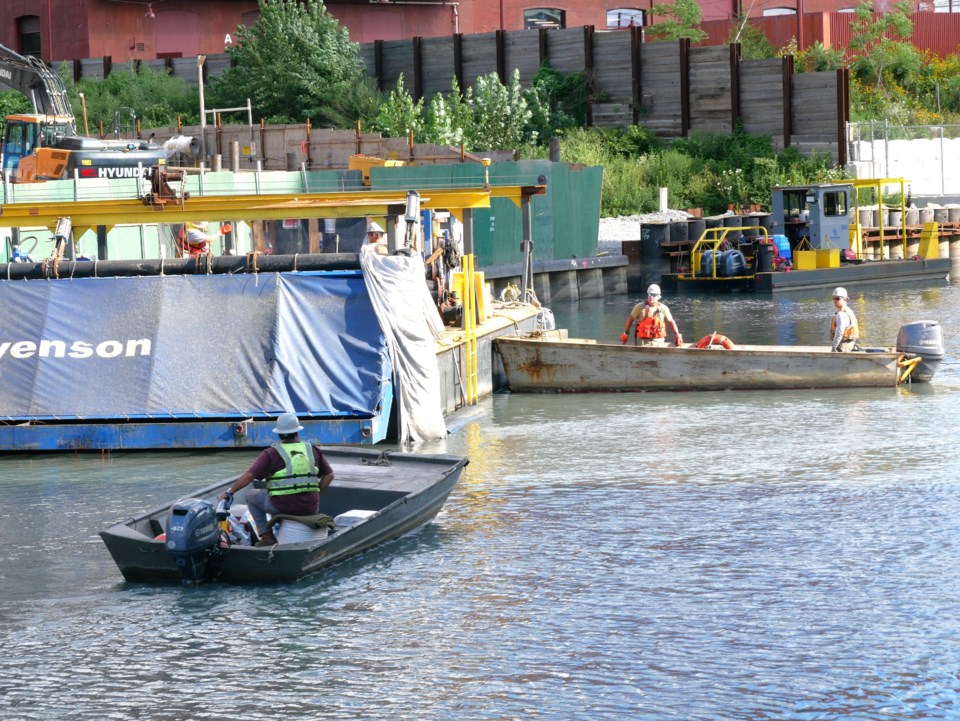
Plus, he adds, the canal remains one of the “hottest” hang-out spots for baby fish in the city, due to its historical status as a prime egg-laying estuary.
A silver lining to the die-off, Francis said, is that it “just goes to show how much life is in there that we're maybe not that aware of.”
He is confident the canal’s fish population will bounce back quickly, as it has over 160 years of heavy pollution.
“We've kind of inadvertently, throughout history, made it much much harder for nature to be there,” he said. “And yet it's still there, and it's still surviving.”

